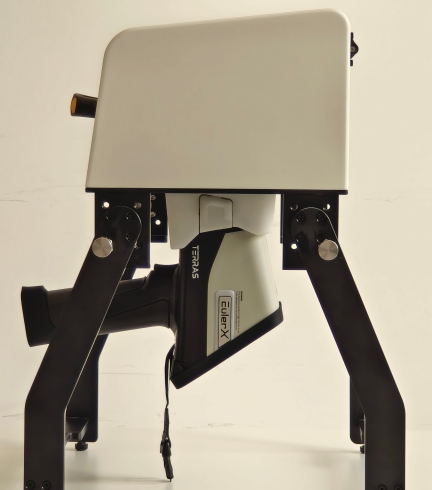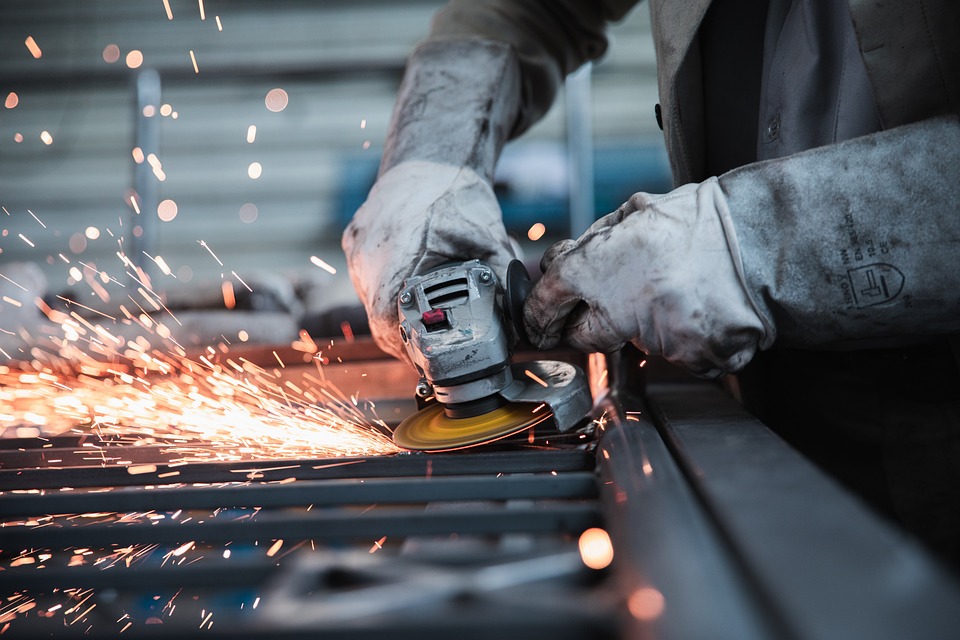
Alloy
A high-tech enterprise focusing on the development and application of X-ray technology products, committed to becoming a leading supplier of X-ray industrial testing solutions.
Portable vs. Benchtop: How Your Choice Drives the Cost of an XRF Machine
You’ve decided that X-ray Fluorescence (XRF) is the right technology for your elemental analysis needs. Whether you're in mining, scrap metal, environmental testing, or quality control, the next critical question is: which type of analyzer should you invest in?
The choice between a portable (handheld) and a benchtop XRF machine is one of the biggest decisions you'll make, and it has a profound impact on the total cost. But the price tag is more than just the initial purchase; it's about the value the instrument delivers in your specific context.
Let's break down how your choice drives the cost, both upfront and over the lifetime of the instrument.

The Upfront Investment: Purchase Price
At first glance, the price difference seems straightforward.
Portable XRF: These are highly engineered, compact marvels. The miniaturization of X-ray tubes, detectors, and computing power into a robust, battery-operated housing is a significant technological feat. This R&D and advanced manufacturing come at a premium. You can expect a high-performance handheld XRF to be a substantial investment, often ranging from $25,000 to over $50,000 depending on the configuration and capabilities.
Benchtop XRF: While also sophisticated, benchtop systems don't face the same miniaturization challenges. They are designed for a stable, lab-based environment. This often allows them to incorporate more powerful components (like higher wattage X-ray tubes) without the same size and power constraints. Consequently, a benchtop XRF can have a wider price range, from around $30,000 for a basic model to well over $100,000 for a high-end system with advanced features like vacuum purge or helium flush for light element analysis.
Cost Driver Verdict: A high-end benchtop will almost always have a higher initial purchase price than a handheld. However, an entry-level benchtop might be comparable in price to a top-tier portable.
The Hidden & Ongoing Costs of Ownership
The purchase price is just the beginning. The true cost of ownership unfolds over years.
1. Labor and Operational Efficiency
This is where the core value proposition of each machine lies.
Portable XRF: The "Go-To" Tool. The primary advantage is mobility. You take the analyzer to the sample, not the other way around. This eliminates:
Time-consuming sample transport and prep. No need to collect, bag, label, and transport samples back to a lab.
Analysis delays. Get real-time, on-site results for immediate decision-making. In scrap yards, this means instant alloy grade identification and sorting. In mining, it enables real-time ore grade control.
Cost Savings: This efficiency translates directly into saved labor hours, faster turnaround times, and the ability to test a much larger volume of material, leading to better process control and profitability.
Benchtop XRF: The "Bring-To" Workhorse. Benchtops excel at high-throughput, high-precision analysis in a controlled environment. Their costs are associated with:
Sample Preparation. For the most accurate results, samples often need to be homogenized, crushed, pressed, or fused. This requires additional equipment (presses, mills) and dedicated labor.
Laboratory Space & Conditions. They require a dedicated, climate-controlled space with a stable power supply.
Cost Implication: While the per-sample analysis might be faster on the benchtop, the overhead of sample prep and lab management adds to the operational cost.
2. Maintenance and Consumables
Portable XRF: The main consumables are the prolate window (a fragile polymer that protects the instrument) and calibration checks. Their rugged design minimizes breakdowns, but repairs can be complex and costly due to the integrated nature of the components. Dropping the unit is a significant risk.
Benchtop XRF: These systems often have more consumables, including collars, film, and helium/vacuum pump oil for systems analyzing light elements (Magnesium, Aluminum, Silicon). They are generally less prone to physical impact damage but have more complex subsystems (pumps, cooling) that may require maintenance.
3. Training and Usability
Portable XRF: Designed for use in the field, they often feature intuitive, icon-driven interfaces. Training for basic operation is typically quick, allowing a wider range of personnel to use them effectively.
Benchtop XRF: The software is more powerful and complex, often requiring a higher level of training to operate correctly, create methods, and interpret data. This can mean a steeper learning curve and a greater investment in specialized lab technician training.
Making the Right Choice: It's About the Application
The "cost" is ultimately defined by the value you receive. Ask yourself these questions:
Choose a Portable XRF if:
You need to analyze samples in situ (e.g., in a mine face, on a production line, at a remote site).
Speed of decision-making is critical (e.g., sorting scrap metal, identifying lead in paint).
The samples are large, immovable, or difficult to bring to a lab (e.g., ship hulls, soil at a contaminated site).
You need to test a high volume of individual items quickly without sample prep.
Choose a Benchtop XRF if:
Your highest priority is ultimate analytical precision and accuracy, especially for light elements.
Your samples are small, powdery, or liquid and can be easily brought to the lab.
You require high-throughput analysis of many prepared samples in a single batch.
Your workflow already includes a sample preparation laboratory.
Take precise, on-the-spot analysis anywhere with the EulerX900S XRF Spectrometer. Identify elements from Mg to U in seconds, enabling you to maximize scrap profits, ensure uncompromising quality control, and conduct rapid environmental screening. Its rugged design is built for the most demanding sites, while instant Wi-Fi reporting and a simple touchscreen turn data into immediate, actionable insights.

Terras EulerX900 Handheld Alloy Analyzer
The Final Calculation
Don't just compare price tags. Calculate the Total Cost of Analysis:
(Instrument Purchase Price) + (Annual Operating Costs * Years of Service)
Where Annual Operating Costs include labor for sampling/prep, maintenance, consumables, and the financial impact of your analysis speed on operations.
For many, the higher upfront cost of a portable XRF is quickly offset by massive savings in labor, logistics, and the immense value of instant data. For others, the unparalleled precision of a benchtop is non-negotiable and justifies the lab infrastructure.
By aligning your choice with your core operational needs, you ensure that your XRF investment doesn't just carry a price—it delivers a powerful return.
About Terra Scientific
Terra Scientific is a high-tech manufacturer specializing in the development and application of X-ray technology products. We are committed to becoming a world-class provider of X-ray industrial inspection solutions. Terra Scientific currently offers a range of products to global customers, including handheld alloy analyzer, handheld precious metal analyzer, handheld mining analyzer, benchtop precious metal analyzers, in-line analyzer, and spectrometer modules, along with XRF analyzers. We continuously serve global clients in fields such as mechanical manufacturing, metal processing, aerospace, petrochemicals, mining and geology, food safety, environmental protection, and scientific research.
To learn more, please don't hesitate to contact us via email at sales@terra-scientific.com, or visit our website at http://www.terra-scientific.com
Join Us
Subscribe to our email list for updates & promotions.



